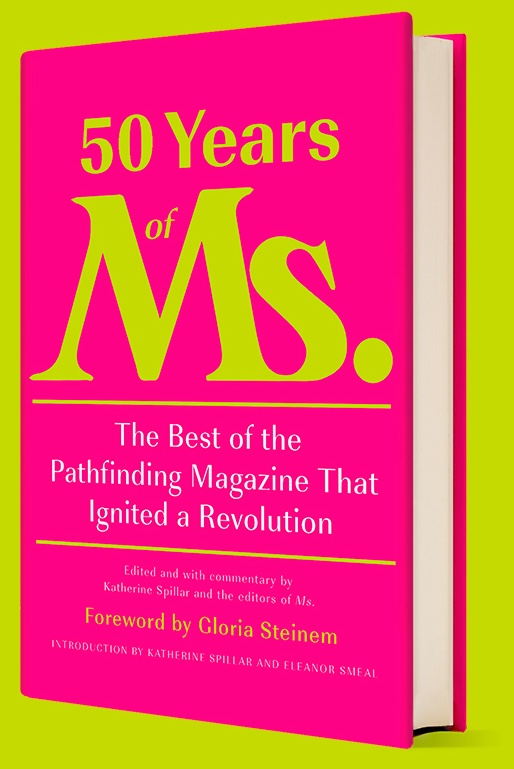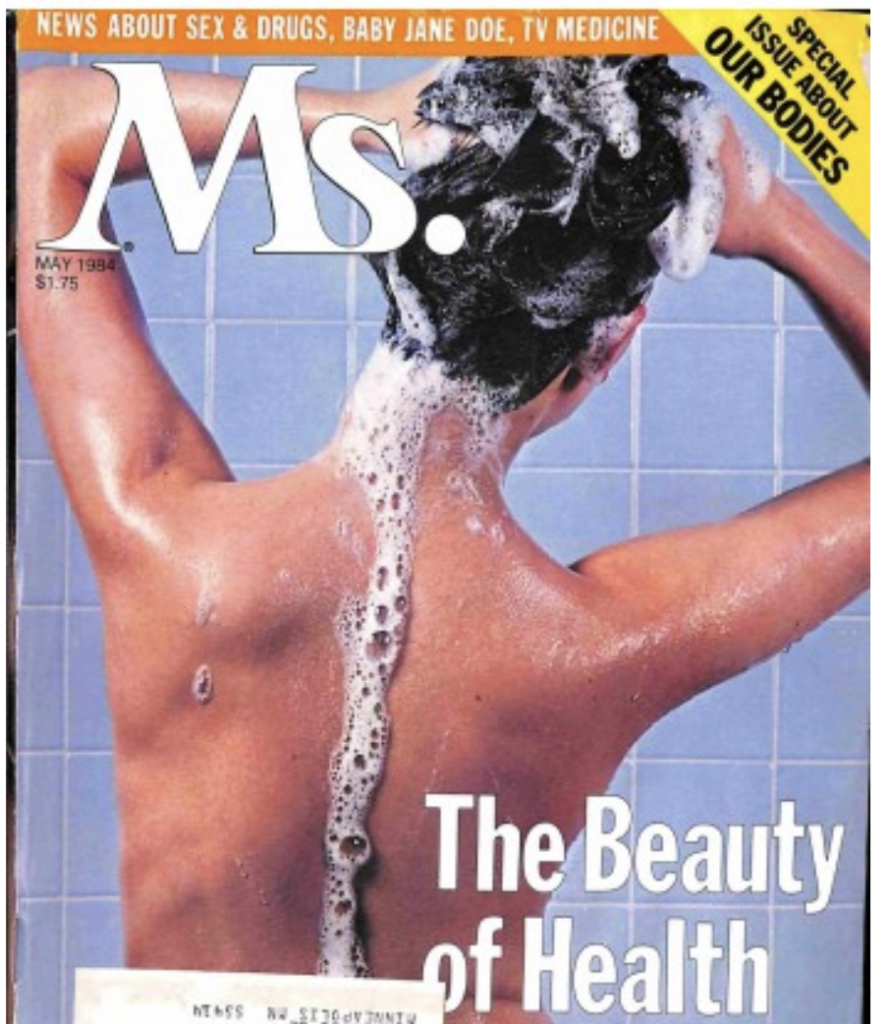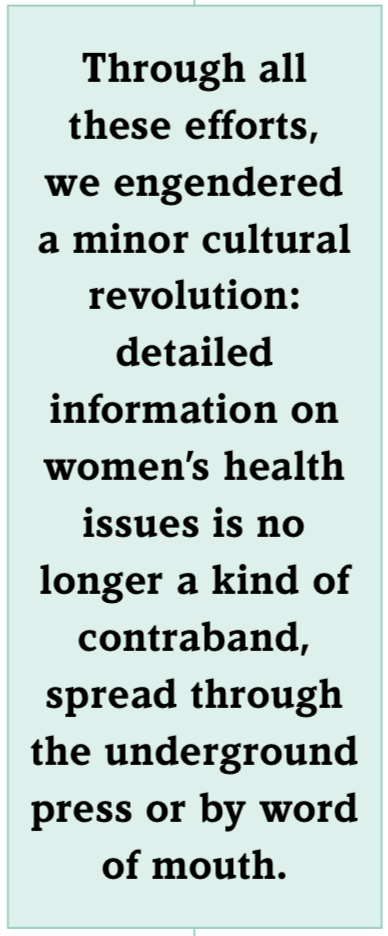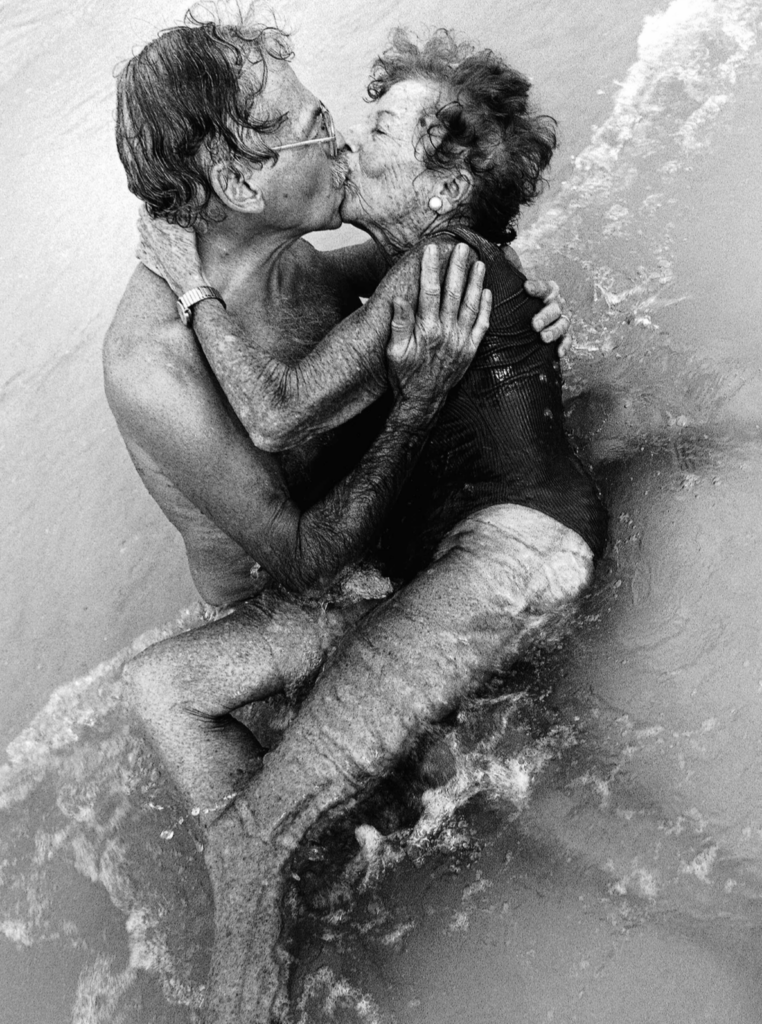
To pay tribute to five decades of reporting, rebelling and truth-telling, From the Vault includes some of our favorite feminist classics from the last 50 years of Ms. For more iconic, ground-breaking stories like this, order 50 YEARS OF Ms.: THE BEST OF THE PATHFINDING MAGAZINE THAT IGNITED A REVOLUTION (Alfred A. Knopf)—a stunning collection of the most audacious, norm-breaking coverage Ms. has published.

In a society that seems more committed to death than to health, sisterhood could save our lives.
From the May 1984 issue of Ms.:
Some people owe their lives to the medical profession; I owe it my feminist consciousness.
I might have said I was a feminist before 1970—which is when I became pregnant and developed a long-term relationship with one of New York City’s out-patient clinics—but secretly I was a premature “postfeminist,” convinced that sexism was a problem chiefly for the oversensitive and underassertive. But six months of prenatal “care,” capped off with a hair-raising labor (induced at 11 p.m. by a doctor who wanted to go home), cured all that. When the whole experience was over, there were two more feminists in the world—the other one being my daughter.
When I think of the beginnings of the women’s health movement, I think, above all, of the stories women told.
Stories, like my own, of humiliation and helplessness: For example, of being diagnosed as “difficult” for asking questions, or “neurotic” for possessing a symptom for which the doctors did not yet have a disease.
Stories of terrible insult: like that of the teenage black woman who had been subjected to a dozen serial pelvic exams for teaching purposes because she was a “charity case.”
Stories of unbearable loss: like that of a Missouri woman who told me she had been sterilized, at her doctor’s discretion, just after delivering her first baby—stillborn.
And some stories told in the third-person, because the protagonists had not survived to tell them: stories of wombs perforated by unsafe—actually, experimental—IUDs; stories of sleazy back-alley abortionists who left women hemorrhaging or fatally infected.
The stories had always been there, but it took the Women’s Movement to break down the barriers of secrecy and shame that had kept us from telling them. I remember the relief in the room when a group of women, meeting in the old Cleveland Women’s Liberation Center, discovered that every one of us had been told, at one time or another, that her uterus was under- sized, misshapen, or misplaced. How could every woman’s body be somehow abnormal and pathological?
And I remember our excitement at hearing that a group of women in Boston were studying the medical literature by themselves to prepare a feminist guide to women’s health (this became Our Bodies, Ourselves).
That two Los Angeles women, Carol Downer and Lorraine Rothman, had taught themselves to do cervical self examinations (Downer soon founded the first Feminist Women’s Health Center).
That a group of Chicago women collectively called “Jane” had set up an underground, but scrupulously safe, abortion service that would operate until abortion was legal. It began to seem possible that, with enough organizing, studying and—especially—sharing, we might just achieve “the right to control our own bodies.”
To an extent that I find almost awesome in retrospect, we did succeed. We created women-run health centers where there were no “patients,” only participants. We learned to lobby the FDA and take drug companies to court. We produced our own generation of feminist experts—women like Barbara Seaman, coauthor of Women and the Crisis in Sex Hormones; Helen Rodriguez-Trias, a leading activist against sterilization abuse; Doris Haire, an early critic of conventional childbirth practices. A group whose names should strike fear in the hearts of the self proclaimed “M.D.eities,” as someone aptly labeled them.

And through all these efforts, we engendered a minor cultural revolution: Detailed information on women’s health issues is no longer a kind of contraband, spread through the underground press or by word of mouth. Abortion is not only legal, but it is understood by most Americans to be a morally valid choice. Fitness and physical strength are no longer seen as exclusively masculine, and women’s sports are moving into the mainstream of American culture.
Perhaps most important, the women’s health movement legitimized the notion that we have the right to know and to decide about procedures—from sterilization to hormone treatments—that affect our bodies and our lives. As a disconcerted male doctor observed in the American Medical Association’s newsletter in 1974, when the movement was just beginning to have a national impact, “Even my docile patients are asking questions.”
But for most of our successes, there has been a bitter disappointment. No sooner had the Supreme Court made abortion legal than the Hyde Amendment (first passed in 1977) made it inaccessible to millions of poor women by cutting off Medicaid funding for this and other procedures. We had pressured hospitals to “humanize” childbirth only to see new technologies—particularly fetal monitoring and the associated upsurge in cesarean sections—make it more alienating and potentially dangerous than ever. And we found, to our horror, that when we succeeded in pushing a hazardous product off the market—like high-estrogen birth control pills or the Dalkon Shield—the manufacturers would turn around and “dump” it on unsuspecting women in the Third World. For every two steps forward, there was one long, and sickening, lurch backward.

Then, in the last four years, it seemed as if the ground gave way beneath our feet. We had assumed that, if sufficiently badgered and lobbied, government would come down on our side in the fight against private medical interests and for a more health-giving society: a safe enough assumption to make in a democracy, especially since previous administrations had even talked of a “right to health care.”
But the current [Reagan] administration seems to make another assumption: that the function of government is military; otherwise it’s every man, woman and child for themselves. In a short four years, government regulatory functions—which are the bugaboo of conservatives and also the absolute cornerstone of health protection—were abandoned or undermined in dozens of areas, from drug and product safety, to occupational health and safety and environmental protection.
The administration has ransacked health-related social programs to finance its unprecedented peacetime military expansion. The list of programs that have been sacrificed for MX missiles or “Star Wars” weaponry includes food stamps, school lunches, childhood immunization programs, Medicaid and a host of smaller programs aiding disabled children, pregnant teenagers, victims of lead poisoning and others.
These cutbacks, and the increasingly desperate condition of America’s poor (who are not only disproportionately minorities, but disproportionately women of all races), cast a grim new perspective on feminist health priorities: How important is it to improve the quality of the birth experience when, for women threatened with malnutrition, the issue is whether their babies will survive at all? How important a target is medical sexism when a growing number of women simply cannot afford medical care, sexist or otherwise?
Or, ultimately, how do we weigh any issue against the nuclear holocaust that the superpowers seem to be so busily preparing for?
Of course, we have to do it all: Protest the insults as well as the injuries, confront the emergencies of life in this era as well as the gathering prospect of death. We had started, over a decade ago, with issues that seemed intensely personal (some said “trivial”). We discovered that these issues were also “political”—that is, that they involved power and required us to pool our strength and exert our collective pressure.
Now we find that those issues which were always “political”—war and peace, the philosophy and direction of government—are, in their impact, also intensely personal: Health is not a concept that ends at the boundary of the individual body.
I feel discouraged only when I think we might drift apart—each pursuing her solitary vision of health and letting silence, once more, fill the space between us. The lesson of our victories, and they are minor, is that we can win when we work together. In a society that seems more committed to death than to health, sisterhood could save our lives.
Up next:





